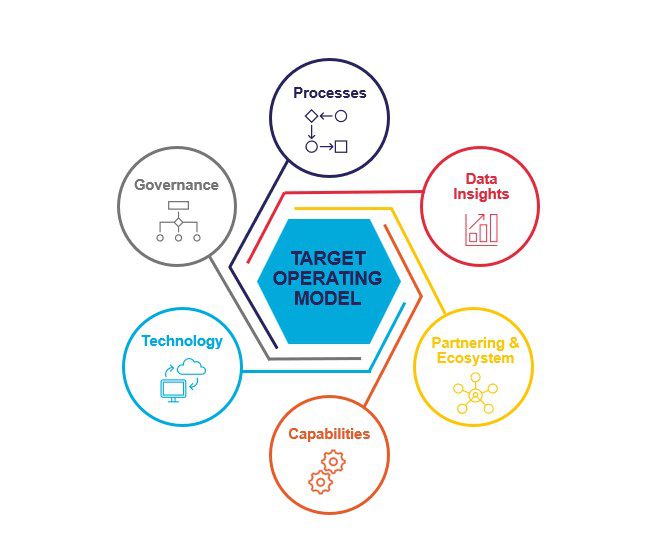Our website is not supported on this browser
The browser you are using (Internet Explorer) cannot display our content.
Please come back on a more recent browser to have the best experience possible

To support a wider shift to leveraging data for connected vehicles and autonomous driving purposes, our client, a luxury automotive manufacturer created a new department to develop and deploy digital service offerings to their customers. However, the newly formed department lacked clear roles and responsibilities, frequently experienced avoidable delays, and unstable service quality often resulted in severe overspends. MIGSO-PCUBED was engaged to provide Program Recovery services to get the program back on track.
While the initial engagement was initially focused on program recovery, the team prioritized not only getting to green but understanding the root cause of the issues at play. Through a program diagnostics, the team found that the department was not making good use of capabilities available in the wider organization.
Business processes were broken, people did not have the right capabilities, and core governance was not strong enough. The team lacked the ability to use existing data to drive effective decision-making. To compound, the client did not have the time, nor the expertise to identify, consider solutions or deliver a new operating model and ways of working.

MIGSO-PCUBED (MP) pivoted to driving a Transformation Program, implementing a new target operating model (TOM) which embraced innovative technologies that facilitated enhanced decision making.
Utilizing a highly tailored approach, the team designed a transformation program that utilized best practices from Managing Successful Programs, Lean Innovation, Business Agility, Data to Decisions, and core Change Management.
The resulting target operating model addressed:

The starting point for the transformational journey was to define the desired future state based on identified business requirements. To do so, the MP team ran targeted workshops over a period of 4 weeks, leveraging a mixture of the M|P Innovation Framework Tools. The approach was to first capture the Voice of the Customer and to analyze the As-Is state of the core business process, leading to the identification of 162 unique pain points.
Read Also: How can Innovation Frameworks help you?
Deep diving into these pain points, the team identified the root causes and developed 42 value-adding improvement opportunities across the end-to-end process. The opportunities spanned each of the 6 areas identified above, tackling ideas ranging from implementing a Business Intelligence solution and automated reporting, to; defining and deploying a new capacity and demand management approach. In addition, a Data Monetization Strategy was developed, and wider partnerships were explored leading to a new approach to intra-team collaboration being established.
As the whole point of the department was to leverage data for connected vehicles and autonomous driving, this was the first key priority area to improve upon. Previously, data was accumulated by a third-party supplier. This often resulted in additional costs, low visibility or access to the data, and inaccuracies affecting the quality of reporting.
Using a low code option, MP designed, built, and delivered an improved reporting solution, integrating multiple reporting systems into a single visualization platform. This provided multiple interactive dashboards that enabled real-time data insights on key performance indicators, expediting and improving decision-making within the client team.
One dashboard provided an overview of service usage data in customizable charts. This dashboard helped the team visually understand which services were most popular and the regions with the highest utilization rates.
A second dashboard combined multiple reporting tools into a single status report providing a high-level overview of open issues across the team. The tool was reviewed with the key stakeholders and training packs were created for both users and owners of the dashboard. The training was accompanied by handover reviews to ensure the client team was able to adopt, utilize and become proficient with the dashboard tools.
Finally, this solution also gave the client team access to additional data warehouses within the wider Group organization, contributing towards future data utilization.
Learn More about: Digital Dashboard Development Services
A second key area addressed was around Resource Management. Historic systems were not trusted by the client, they were considered unreliable and convoluted. A capacity and demand management solution was required in order to achieve higher predictability of resource needs for present & future projects.
The MP team developed a solution that provided improved clarity by harnessing real-time, accurate project information stored within Microsoft Project. As the tool was easily maintained it could now show the true workloads and activities carried out by the team.
It not only gave the client a better understanding of the work that could be achieved each week by their teams, but it also delivered long-term cost savings in the mid-6-figure range over the historic tool.
To help the client make the best use of their existing data, the team developed a Data Usage and Monetisation strategy. The strategy was designed to ensure key knowledge share and communication flow across the client’s partner and group organizations. It established a proposal for data management and governance hierarchy across connected car data lakes.
The MP team advised on the latest industry trends, benchmarking, and best practices in connected car data use. The MP team also supported the strategy team in contact creation and in identifying wider group strategy implications.
In total, the Data Usage and Monetisation strategy proposed 10 short and 6 long-term data optimization solutions to target internal cost savings, additional value generation, and monetization strategies. It identified 6 new revenues streams, with the potential to unlock additional income up to £5-20m.
The MP team hosted and facilitated workshops dedicated to improving collaboration and cooperation between the departments. In parallel, the MP team conducted a gap analysis of the people, processes, and technology, namely the tools, templates, and capabilities of the client-side team.
The workshops and gap analysis resulted in the implementation of a range of client-centric initiatives, aimed at increasing the efficiency of knowledge share and knowledge management within the team. Specific examples include the creation of an ever-green knowledge repository and tailored templates. The new central source of information and clear visual dashboard reduced the time normally spent manually gathering information. Finally, the team further improved Stakeholder engagement and governance through the establishment of new meeting cadences, encouraging and rewarding collaboration.

Over the course of the engagement MP delivered the new business strategies and business activities following Agile principles, in synergy with the best of the client’s “traditional” delivery methodology. Ultimately this allowed the client to realize the benefit of new solutions every 2 weeks.
Following the completion of the solutions set, the MP team focused on handover and upskilling the client teams to ensure maximum, adoption, utilization, and proficiency of the business model. This embedding and reinforcement phase enabled the teams to collaboratively identify and resolve operational snags. Regular improvements were made during the scheduled demo and retrospective feedback sessions.
As a result, the project delivery improvements have been well received and considered a significant success. Additional client departments have approached the delivery team to access the various solutions and their support directly.
A quick summary of the target operating model transformation includes:
This article was written by James Murray
Loved what you just read?
Let's stay in touch.
No spam, only great things to read in our newsletter.
We combine our expertise with a fine knowledge of the industry to deliver high-value project management services.
MIGSO-PCUBED is part of the ALTEN group.
Find us around the world
Australia – Canada – France – Germany – Italy – Mexico – The Netherlands – Portugal – Romania – South East Asia – Spain – Switzerland – United Kingdom – United States
© 2024 MIGSO-PCUBED. All rights reserved | Legal information | Privacy Policy | Cookie Settings | Intranet
Perfect jobs also result from great environments : the team, its culture and energy.
So tell us more about you : who you are, your project, your ambitions,
and let’s find your next step together.
Dear candidates, please note that you will only be contacted via email from the following domain: migso-pcubed.com. Please remain vigilant and ensure that you interact exclusively with our official websites. The MIGSO-PCUBED Team
Choose your language
Our website is not supported on this browser
The browser you are using (Internet Explorer) cannot display our content.
Please come back on a more recent browser to have the best experience possible
